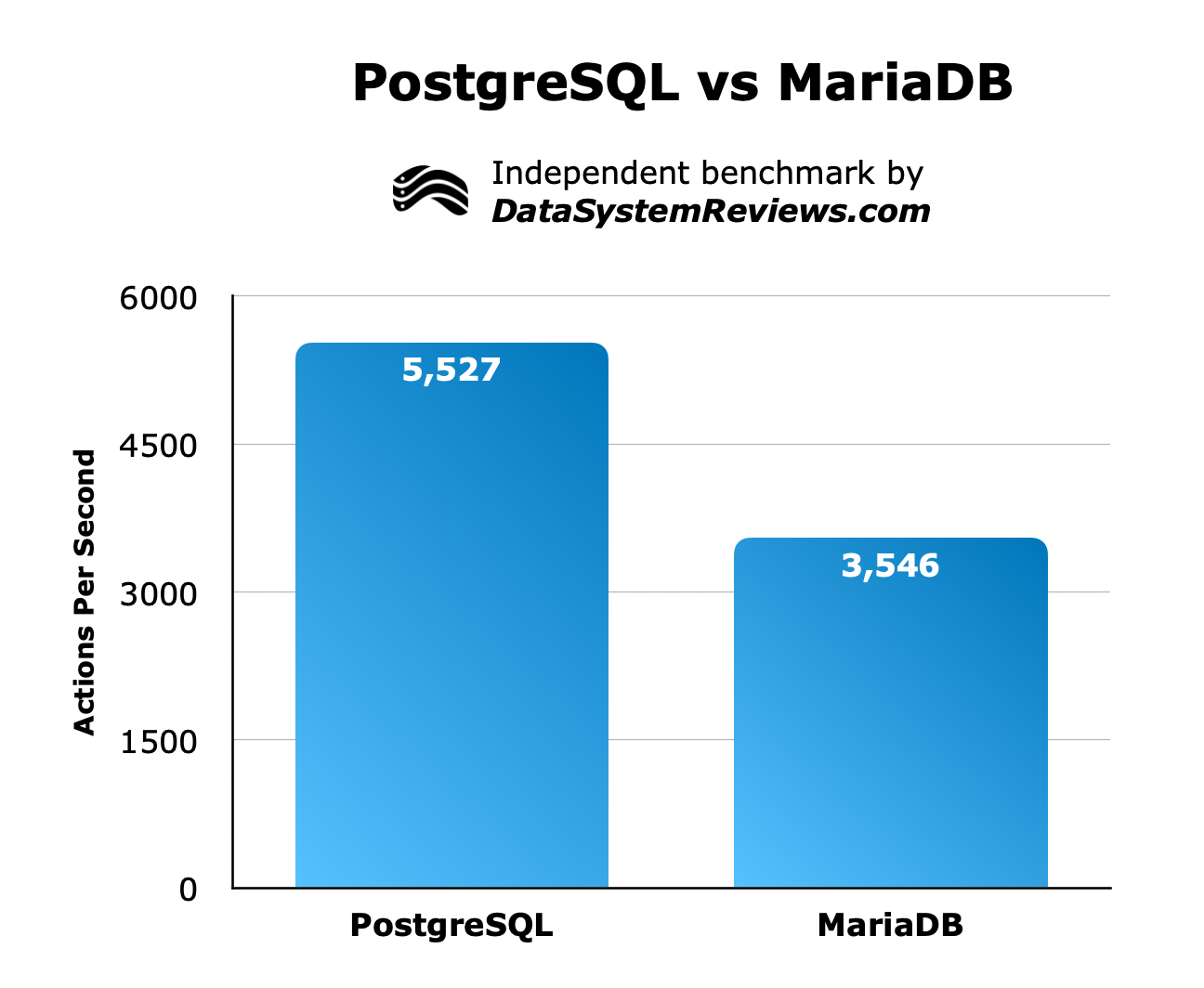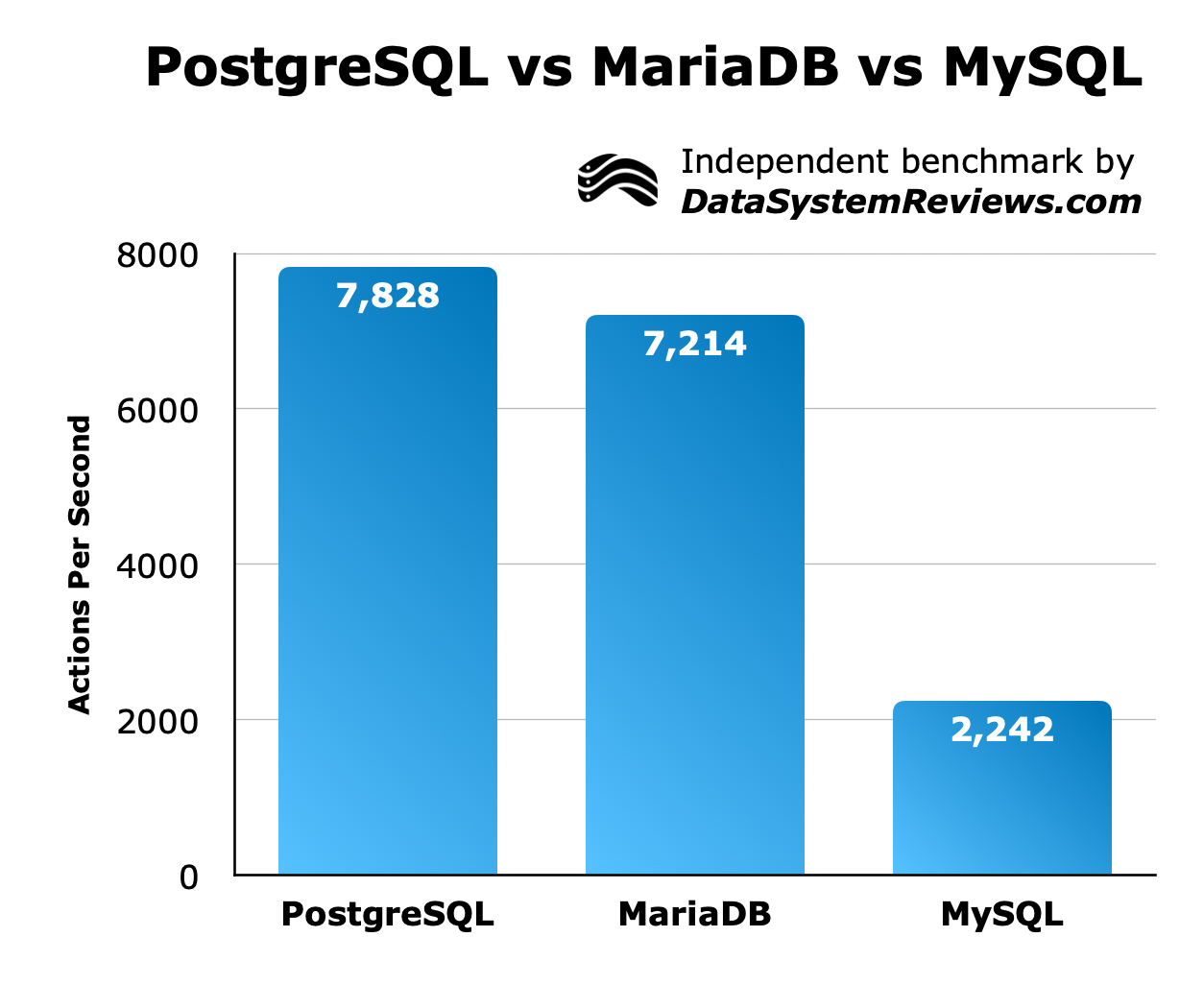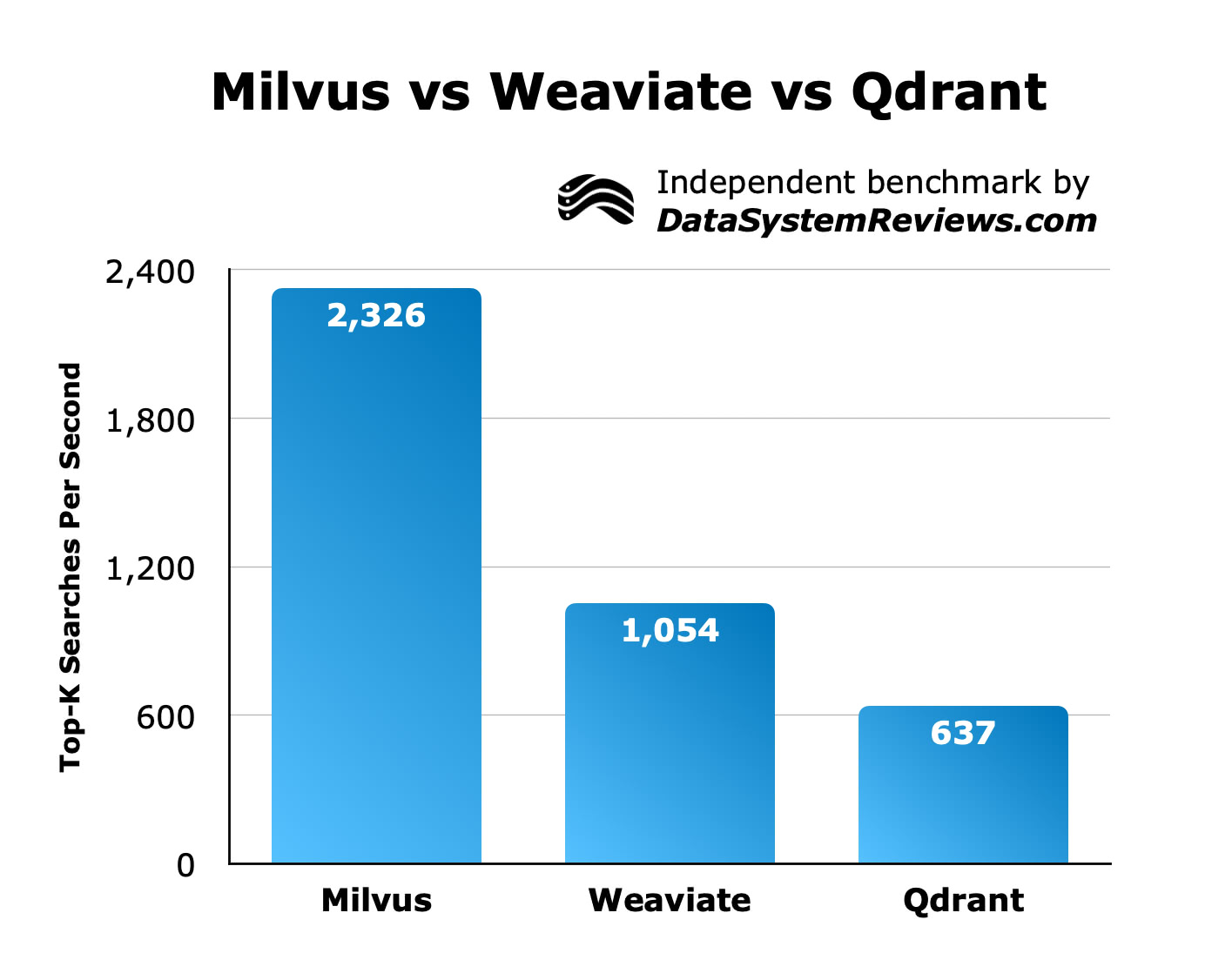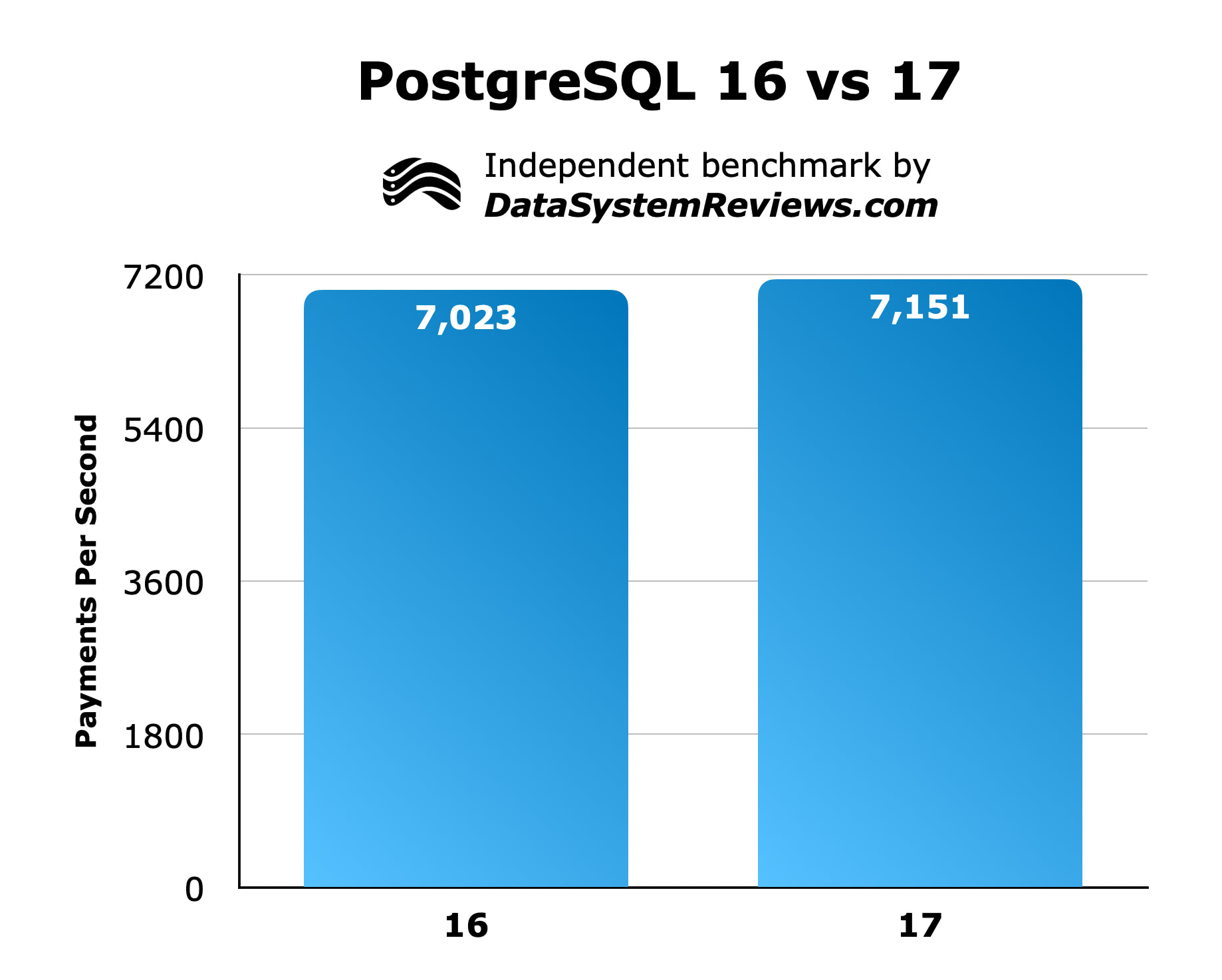Data System Reviews
Independent benchmarks and reviews of databases and other data systems.
Featured articles
PostgreSQL VS MySQL Performance Comparison
 PostgreSQL is significantly faster than MySQL in my most recent performance benchmarks using Reserva, a custom database benchmarking tool.
PostgreSQL is significantly faster than MySQL in my most recent performance benchmarks using Reserva, a custom database benchmarking tool.
PostgreSQL VS MariaDB Performance Comparison
 PostgreSQL was much faster than MariaDB in my latest rounds of tests. I would use it, if that choice is availabile.
PostgreSQL was much faster than MariaDB in my latest rounds of tests. I would use it, if that choice is availabile.
Fastest Open-Source Databases
 PostgreSQL and MariaDB are the fastest mainstream open-source databases. MySQL has some catching up to do.
PostgreSQL and MariaDB are the fastest mainstream open-source databases. MySQL has some catching up to do.
SkySQL VS AWS Aurora Performance Comparison
 SkySQL is 30% faster and 24% cheaper than AWS Aurora in my tests. I recommend checking it out for any MySQL compatible workloads.
SkySQL is 30% faster and 24% cheaper than AWS Aurora in my tests. I recommend checking it out for any MySQL compatible workloads.
Best Open-Source Vector Databases
 A roundup of the most popular vector databases, their relative performance levels, and an explanation of where each one shines.
A roundup of the most popular vector databases, their relative performance levels, and an explanation of where each one shines.
PostgreSQL 17 Performance Benchmark
 PostgreSQL 17 claims many performance improvements. In this article, I benchmark it against PostgreSQL 16.
PostgreSQL 17 claims many performance improvements. In this article, I benchmark it against PostgreSQL 16.
Best Databases
An explanation of the most important database type and my opinion on which ones are worth your time and money.
Best Data Warehouses
An explanation of what a data warehouse is and opinions on which ones are worth your time and money.
Should You Use Snowflake Or Databricks?
Snowflake and Databricks are two well known providers of analytical data tools. Because of this, they’re frequently compared to each other. Fortunately, the choice between their product offerings is usually straightforward once you’ve defined your use case. In fact, their products complement each other well and shouldn’t really be considered competitors.